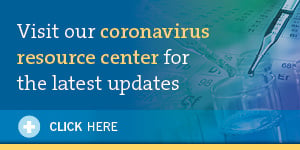A bipartisan agreement for the Paycheck Protection Program and Health Care Enhancement Act (the “Act”) was passed by the U.S. Senate on April 21, 2020. After being passed by the Senate, the Act will be presented to the House of Representatives for a vote and subsequently to President Trump to be signed into law. Congress is expected to pass an additional fourth COVID-19 stimulus package in the coming weeks.
Key amongst its relief provisions, the Act, if passed by the House of Representatives and signed by the President, would:
- Increase the appropriation level for the Paycheck Protection Program by over $320 billion, from $349 billion to $670.335 billion, and increase the authorization level for the Emergency Economic Injury Disaster Grants from $10 billion to $20 billion;
- Appropriate an additional $75 billion in funding to the $100 billion provider relief fund under the Public Health and Social Services Emergency Fund (“PHSSEF”); and
- Appropriate $25 billion for COVID-19 testing expenses.
Below is a summary of the key health care provisions of the Act.
1. Additional $75 Billion in Funding to the Provider Relief Fund
The Act appropriates $75 billion to the PHSSEF provider relief fund (“Provider Relief Fund”). This amount is in addition to the $100 billion allocated to the Provider Relief Fund under the earlier Coronavirus Aid, Relief, and Economic Security Act (the “CARES Act”). Notably, the Act appropriates $6 million of the $75 billion to the U.S. Department of Health and Human Services Office of the Inspector General (the “HHS/OIG”) for oversight of activities supported by funds appropriated to HHS in order to prevent, prepare for, and respond to coronavirus.
The Act does not make any other changes to the Provider Relief Fund. See our alerts on the CARES Act and Implementation Guidelines for the PHSSEF for additional information on eligibility and permitted use of funding.
2. $25 Billion in Funding for COVID-19 Testing-Related Expenses
The Act appropriates $25 billion to the PHSSEF to address expenses related to expanded COVID-19 testing. The fund is intended to “prevent, prepare for, and respond to coronavirus, domestically or internationally, for necessary expenses to research, develop, validate, manufacture, purchase, administer, and expand capacity for COVID-19 tests to effectively monitor and suppress COVID-19,” including:
- Tests for both active infection and prior exposure, including molecular, antigen, and serological tests;
- Manufacturing, procurement, and distribution of tests, testing equipment and testing supplies (including personal protective equipment (“PPE”) needed for administering tests);
- Development and validation of rapid, molecular point-of-care tests and other tests;
- Workforce support;
- Epidemiology;
- To scale up academic, commercial, public health, and hospital laboratories;
- To conduct surveillance and contact tracing;
- Supporting development of COVID-19 testing plans; and
- Other related activities related to COVID-19 testing.
The amount appropriated may also be used for the following purposes:
- Grants for renting, leasing, purchasing, acquiring, constructing, altering, renovating, or equipping non-federally owned facilities to improve preparedness and response capability at the state and local level for diagnostic, serologic, or other COVID-19 tests (or related supplies);
- Construction, alteration, renovation, or equipping of non-federally owned facilities for the production of diagnostic, serologic, or other COVID-19 tests (or related supplies), where the Secretary determines that such a contract is necessary to secure, or for the production of, sufficient amounts of such tests or related supplies; and
- Purchasing medical supplies and equipment (including PPE and testing supplies to be used for administering tests), increased workforce and trainings, emergency operation centers, and surge capacity for diagnostic, serologic, or other COVID-19 tests (or related supplies). Products purchased with the $25 billion may, at the Secretary’s discretion, be deposited in the Strategic National Stockpile.
The Act requires the Secretary to allocate certain minimum amounts of the $25 billion to specific categories of recipients, as described in more detail below.
-
States and Localities. $11 billion to states, localities, territories, tribes, tribal organizations, urban Indian health organizations, or health service providers to tribes for “necessary expenses to develop, purchase, administer, process, and analyze COVID-19 tests,” including:
- Support for workforce;
- Epidemiology;
- Use by employers or in other settings;
- Scaling up of testing by public health, academic, commercial, and hospital laboratories, and community-based testing sites, health care facilities, and other entities engaged in COVID-19 testing;
- Conducting surveillance and contact tracing; and
- Other related activities related to COVID-19 testing.
- Not less than $2 billion to states, localities, and territories, in accordance with the formula that applied to the Public Health Emergency Preparedness cooperative agreement in fiscal year 2019;1
- Not less than $4.25 billion to states, localities, and territories, “according to a formula methodology that is based on relative number of COVID-19 cases”; and
- Not less than $750 million to tribes, tribal organizations, urban Indian health organizations, or health service providers to tribes, in coordination with the Director of the Indian Health Service.
Portions of the $11 billion are to be allocated in accordance with the following:
The Secretary may satisfy the funding thresholds described above by making awards through “other grant or cooperative agreement mechanisms.” The $11 billion (including its sub-portions) must be allocated within 30 days of the date of enactment of the Act.
The governor or designee of each state, locality, territory, tribe, or tribal organization receiving a portion of the $11 billion must submit to the Secretary a plan for COVID-19 testing within 30 days of the enactment of the Act. The plan must incorporate goals for the remainder of calendar year 2020, including (i) the number of tests needed, month-by-month; (ii) month-by-month estimates of laboratory and testing capacity; and (iii) a description of how the state, locality, territory, tribe, or tribal organization will use its resources for testing.
- HHS Agencies. Up to $4.428 billion to agencies within the U.S. Department of Health and Human Services (“HHS”), including the Centers for Disease Control, National Cancer Institute, National Institute of Biomedical Imaging and Bioengineering, National Institutes of Health, Biomedical Advanced Research and Development Authority, Food and Drug Administration, and the Health Resources and Services Administration.
- Rural Clinics. $225 million to rural health clinics, through grants or other mechanisms, to provide additional funding for COVID-19 testing and related expenses. Such funds may also be used by recipients to build or construct temporary structures, lease properties, and retrofit facilities as necessary to support COVID-19 testing. The funds are to be distributed using the procedures developed for the Provider Relief Fund (i.e., applicants submit an application to the Secretary, who evaluates applications on a rolling basis and distributes payments “in consideration of the most efficient payment systems practicable to provide emergency payment”), or through contracts or agreements.
- Coverage for the Uninsured. Up to $1 billion may be used to cover the cost of testing for the uninsured.
Please visit the Ropes & Gray Coronavirus Resource Center for more information and updates regarding COVID-19 developments.
- According to this formula, states receive the greater of (a) a minimum amount prescribed by the formula or (b) a base amount, as determined by the Secretary, supplemented by a population-based formula. 42 U.S.C. § 247d–3a(3). States may also receive additional funding based on findings about significant unmet needs and high degree of risk. 42 U.S.C. § 247d–3a(5). Eligible political subdivisions may receive an amount determined by the Secretary and possible additional funding based on findings that the political subdivision has a substantial number of residents, has a substantial local infrastructure for responding to public health emergencies, and faces a high degree of risk. 42 U.S.C. § 247d–3a(4).
Authors
Stay Up To Date with Ropes & Gray
Ropes & Gray attorneys provide timely analysis on legal developments, court decisions and changes in legislation and regulations.
Stay in the loop with all things Ropes & Gray, and find out more about our people, culture, initiatives and everything that’s happening.
We regularly notify our clients and contacts of significant legal developments, news, webinars and teleconferences that affect their industries.


